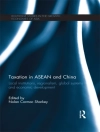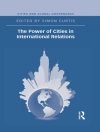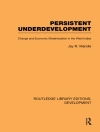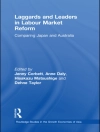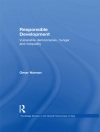The second edition of this book continues to provide a brief exposition of the principles of beam physics and particle accelerators with emphasis on numerical examples. It includes revisions and additions to every section with new material, figures, improved notation, and new or enhanced computer resources. There is also a reorganization of the contents and new sections. The latter include material on transfer maps, thermodynamics of beams, additional aspects of envelope matching, betatron resonances and dispersion with space charge, closed orbits, and beam cooling. The appendix has been completely reorganized, revised and updated and now includes short descriptions of the map code Mary Lie, and the particle-in-cell code Warp.
Tabela de Conteúdo
1. Rays, Matrices, and Transfer Maps 1.1 Paraxial approximation 1.2 Thin lens 1.3 Thick lens 1.4 Transfer Maps 1.5 Computer Resources 2. Linear Magnetic Lenses and Deflectors 2.1 Magnetic Rigidity, Momentum, and Cyclotron Frequency 2.2 Solenoid Focusing 2.3 Quadrupole Focusing 2.4 The Kerst-Serber Equations and Weak Focusing 2.5 Dipoles and Edge Focusing 2.6 Effective Hard-Edge Model of Fringe Fields in Focusing Magnets 2.7 Computer Resources 3. Periodic Lattices and Functions 3.1 Solenoid Lattice 3.2 FODO Lattice 3.3 Lattice and Beam Functions 3.4 Uniform-Focusing (͞Smooth͟) Approximation 3.5 Linear Dispersion 3.6 Momentum Compaction, Transition Gamma, and Chromaticity 3.7 Computer Resources 4. Emittance and Space Charge 4.1 Liouville’s Theorem and Emittance 4.2 The Kapchinskij-Vladimirskij (K-V) and Thermal Distributions 4.3 Thermodynamics of Charged-Particle Beams? 4.4 The K-V Envelope Equations and Space-Charge Intensity Parameters 4.5 Incoherent Space-Charge Betatron Tune Shift 4.6 Coherent Tune Shift and Laslett Coefficients 4.7 Computer Resources 5. Longitudinal Beam Dynamics and Radiation 5.1 Radio-Frequency (RF) Linacs 5.2 Beam Bunch Stability and RF Bucket 5.3 Synchrotron Radiation 5.4 Insertion Devices and Free-Electron Lasers (FELs) 5.5 Longitudinal Beam Emittance and Space Charge 5.6 Computer Resources 6. Envelope Matching, Resonances, and Dispersion 6.1 Cell Envelope Matching 6.2 Source-to-Cell Envelope Matching 6.3 Betatron Resonances 6.4 Betatron Resonances and Space Charge 6.5 Dispersion and Space Charge 6.6 Computer Resources 7. Linacs and Rings (examples), Closed Orbit, and Beam Cooling 7.1 Linacs 7.2 Rings 7.3 Closed Orbit and Correction 7.4 Beam Cooling 7.5 Computer Resources Appendix: Computer Resources and Their Use A1. Hamiltonian Dynamics and Symplectic Condition A2. Lie Algebra Methods A3. Software and Hardware A4. General Tools: A.4.1 Mathcad A.4.2 Matlab A.4.3 Python A5. Matrix/Map Codes: A.5.1 MAD 8 and MADX A.5.2 Elegant A.5.3Winagile A.5.4 Mary Lie A6.Envelope Codes: A.6.1 SPOT and MENV A.6.2 TRACE 2D and TRACE 3D A7. Particle-In-Cell (PIC) Codes: A.7.1 WARP A8 Mobile Applications A.8.1 TAPAS
Sobre o autor
Santiago Bernal obtained a BSc in physics from the Universidad Nacional de Colombia, Colombia, in 1981, a MSc in physics from Georgia Tech in 1983, and a Ph D in physics from the University of Maryland in 1999. He is the junior coauthor with Charles L Joseph (Rutgers University) of Modern Devices: The Simple Physics of Modern Technology (Wiley, 2015). In addition to beam and accelerator physics, Bernal is interested in statistical mechanics and educational aspects of physics.


